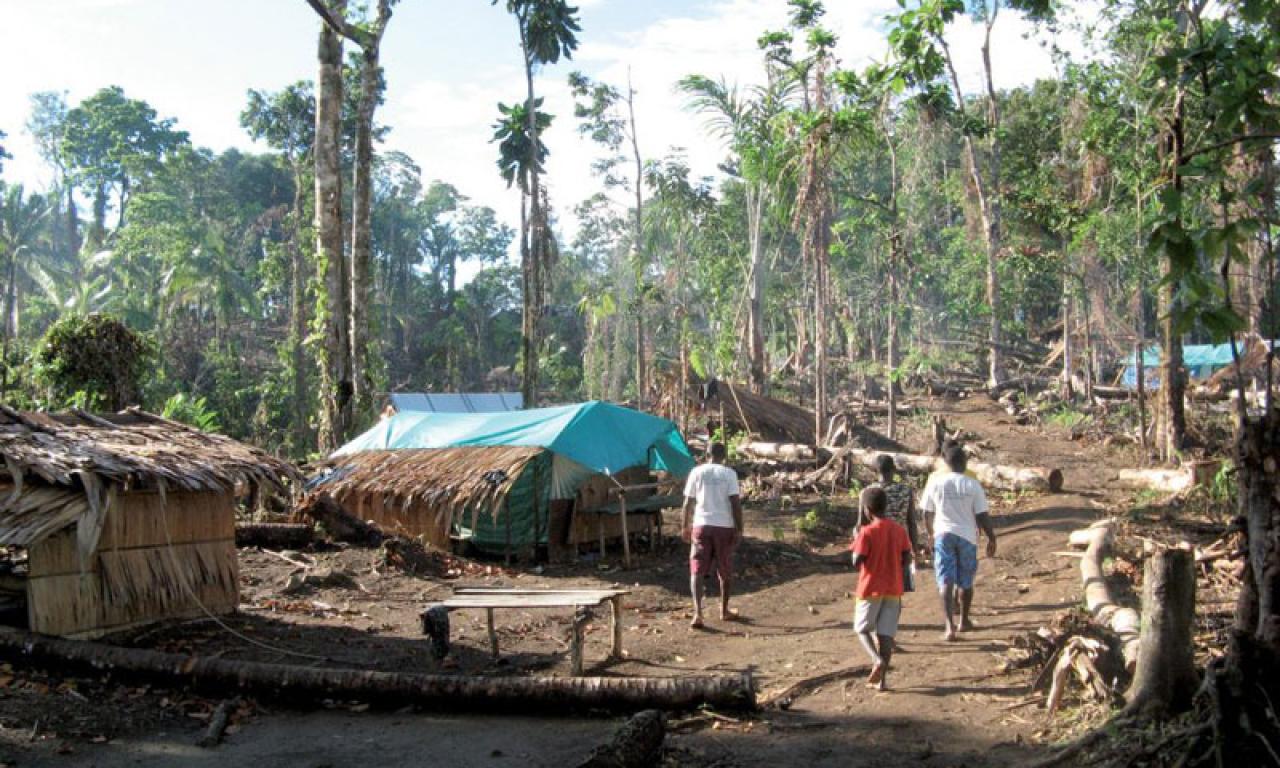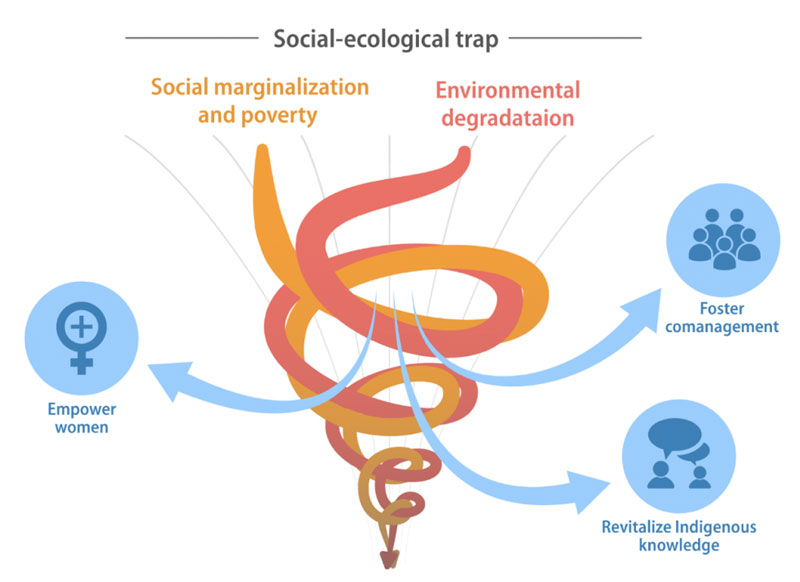
The artist John Olsen is known for his depictions of Australian landscapes through rich paths of meandering lines overlaid with colorful splotches that catch the imagination and connect the mind to a scene. To me, Olsen’s reflection on his creative process resonates with the way we sometimes imagine science:
The artist John Olsen is known for his depictions of Australian landscapes through rich paths of meandering lines overlaid with colorful splotches that catch the imagination and connect the mind to a scene. To me, Olsen’s reflection on his creative process resonates with the way we sometimes imagine science:
‘You can paint pretty pictures all your life … but without metaphor, you’re nothing.”
Metaphors attract the imagination and help conceptualize abstract or complex concepts. Conceptualizing complex systems is an important feature of both scientific discovery and research that is driven by its potential use.
In development and resilience research, the metaphor of a ‘trap’ is commonly employed to convey the rigidity that can be associated with complex systems. In practical meaning, and in their mechanical workings, traps are designed to catch and enclose something. But importantly for our organizational mission, a trap is a metaphor for the entrenched poverty and food insecurity facing millions of people around the world.
For example, in a paper about the historical dynamics of downward spiraling and interconnected poverty and environmental degradation, Wiebren Boonstra and Florianne de Boer evoke the metaphor of ‘social-ecological traps.’ It is a powerful scientific conceptualization that helps structure a logic around an intertwined and entrenched dependence of humanity on ecosystems.
Empirical case studies have helped shape our thinking of social-ecological traps. For example, in tropical reef fisheries, where poverty is high and local institutions weak, overfishing with destructive gear can push coral reef social-ecological systems past key thresholds by reducing coral cover and herbivorous fish.
Building on the foundational literature on social-ecological traps, which describes the context in many of the places where we work, we now look forward and ask how we can better understand and enable the breaking and escaping of social-ecological traps. With this aim in mind, I teamed up with fellow researchers to lead a Special Feature in the journal Ecology and Society using the trap metaphor as a unifying framework for collating insights on overcoming challenges of entrenchment and path-dependence across diverse geographies, sectors, and social-ecological contexts.
We requested contributions to this feature that explored tangible pathways for disrupting social-ecological traps. Thematic relevance and clear contribution to social-ecological scholarship were emphasized in the invited contributions, but authors were not constrained by methodological approach, context, geographical location, or sector. The result is a suite of articles, ranging from case studies to synthesis papers, that generate rich insights on overcoming this challenge of entrenchment.
Through synthesis of the papers in this Special Feature, we identify three pathways that have contributed to disrupting trap processes: 1) Revitalizing Indigenous knowledge and stewardship, 2) Fostering co-management and 3) Empowering women.

What is striking, upon reflection, is that these are not new thematic areas of scholarship and practice. They are in-fact areas where there is a long history of engagement across schools of thought and sectors. So, in some way the feature is encouraging: we seem to be on the right track. Continuing with demand-driven and use-inspired research in these spaces may further advance the understanding of what solutions look like.
Contributions to the feature also help illustrate a conceptual muddiness about pragmatizing livelihood diversification as a process: they highlight some of the challenges associated with livelihood diversity narratives and programs that support it as a solution to entrenched poverty and environmental degradation. Livelihood diversity can build resilience within rural households but externally supported diversification programs are challenged by the complex conservation and poverty challenges in rural communities.
The social-ecological trap language has created a scientific metaphor that can simplify complex processes for analyses and potentially action, yet it is still a clumsy representation of reality. In the process of studying and describing complex, dynamic contexts, we clearly create imperfect representations of reality, which may inhibit us to truly understand the choices that people make and the institutions that govern people’s behavior and conduct.
The collection of studies in the Special Feature do not claim to solve the challenges associated with entrenched social-ecological traps but rather aims to contribute to the applied research and use-inspired research frontier of understanding impacts and development in areas where livelihoods and natural resources are tightly coupled.
The Ecology and Society Special Feature was convened under the CGIAR research program of Fish in Agri-Food Systems (FISH) led by WorldFish. The thinking and action that led to this feature were brought together under an initiative funded by SwedBio, a program at the Stockholm Resilience Centre, and the Australian Centre for International Agricultural Research (ACIAR) project FIS/2016/300.
